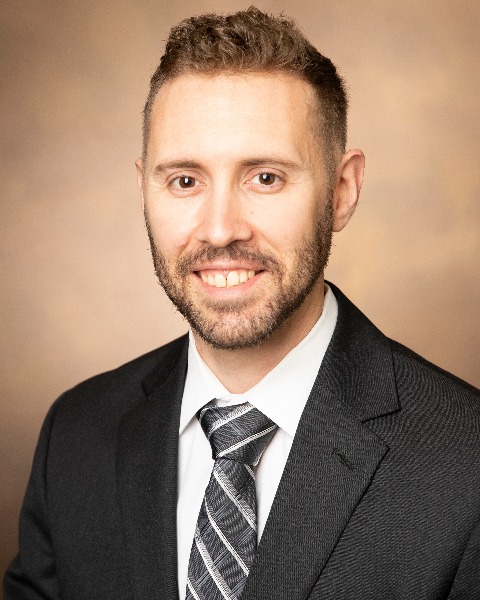Deformity
Exploring the Indications, Failures, and Treatment of Complications After a C2 to Pelvis Fusion
Friday, February 21, 2025
7:00 AM - 2:00 AM EST

Steven Roth, MD
Assistant Professor of Neurological Spine Surgery
University of Florida
Gainesville, FL, US
Presenting Author(s)
Introduction: Fusions from the cervical spine to pelvis are relatively uncommon procedures. As a result, their indications and complications are not well-characterized in the current literature. In the largest series on C2-pelvis fusions, we seek to better elucidate the C2-related complications and treatments.
Methods: This is a retrospective, single surgeon case series of patients who underwent a posterior spinal instrumented fusion from C2-sacrum from 2016-2023. Both primary and revision cases were included. Patient demographics, medical history, diagnosis, operative procedures, and complications were analyzed.
Results: 37 patients underwent posterior spinal instrumented fusion from C2-Ilium. Mean follow up was 1.9yrs, mean age 56±19yrs, 57% were female, and 38% had osteoporosis/osteopenia. Most patients had a prior fusion surgery 81%(N=30), which commonly included upper thoracic to sacrum(N=15) and cervical-thoracic (N=5) fusions. Most common reasons for C2-Ilium constructs included PJK/PJF(N=12), chin-on-chest deformity(N=5), and pseudarthrosis(N=5). The surgical complication rate was 46% (17/37), the revision surgery rate was 38%(14/37), and 3 patients required multiple revision surgeries after the C2-pelvis construct. Reoperations commonly addressed C2-related fractures (N=6), wound complications (N=5), and pseudarthrosis unrelated to C2(N=4). For those with C2 issues, surgery included either extension of fusion to Occiput(N=2) and C1(N=4) or revision C2(N=2). Four patients with radiographic C2 issues(i.e. partial screw pull-out) were treated non-operatively in a hard collar after appearing stable on repeat imaging.
Conclusion : This is the largest series of C2-ilium reconstructions with a mean follow-up of 2 years. The most common indication for surgery to C2 was proximal junction kyphosis/failure, followed by chin-on-chest deformity and pseudarthrosis. The surgical complication rate was 46%, and the revision rate was 38%. The most common reason for revision surgery was C2-related fractures and screw loosening, with 43% being extended to C1 or the occiput. Long constructs from C2-ilium carry a high complication rate and require frequent follow-up to assess for long term issues.
Methods: This is a retrospective, single surgeon case series of patients who underwent a posterior spinal instrumented fusion from C2-sacrum from 2016-2023. Both primary and revision cases were included. Patient demographics, medical history, diagnosis, operative procedures, and complications were analyzed.
Results: 37 patients underwent posterior spinal instrumented fusion from C2-Ilium. Mean follow up was 1.9yrs, mean age 56±19yrs, 57% were female, and 38% had osteoporosis/osteopenia. Most patients had a prior fusion surgery 81%(N=30), which commonly included upper thoracic to sacrum(N=15) and cervical-thoracic (N=5) fusions. Most common reasons for C2-Ilium constructs included PJK/PJF(N=12), chin-on-chest deformity(N=5), and pseudarthrosis(N=5). The surgical complication rate was 46% (17/37), the revision surgery rate was 38%(14/37), and 3 patients required multiple revision surgeries after the C2-pelvis construct. Reoperations commonly addressed C2-related fractures (N=6), wound complications (N=5), and pseudarthrosis unrelated to C2(N=4). For those with C2 issues, surgery included either extension of fusion to Occiput(N=2) and C1(N=4) or revision C2(N=2). Four patients with radiographic C2 issues(i.e. partial screw pull-out) were treated non-operatively in a hard collar after appearing stable on repeat imaging.
Conclusion : This is the largest series of C2-ilium reconstructions with a mean follow-up of 2 years. The most common indication for surgery to C2 was proximal junction kyphosis/failure, followed by chin-on-chest deformity and pseudarthrosis. The surgical complication rate was 46%, and the revision rate was 38%. The most common reason for revision surgery was C2-related fractures and screw loosening, with 43% being extended to C1 or the occiput. Long constructs from C2-ilium carry a high complication rate and require frequent follow-up to assess for long term issues.

.jpg)